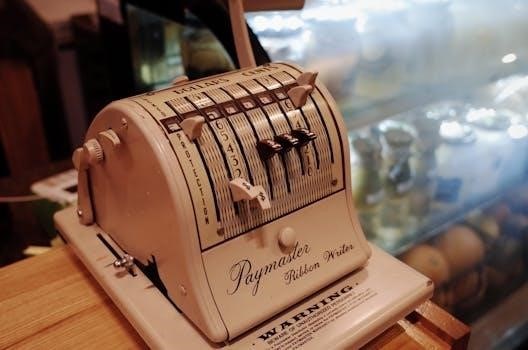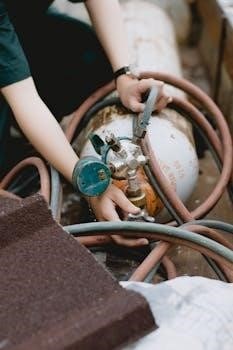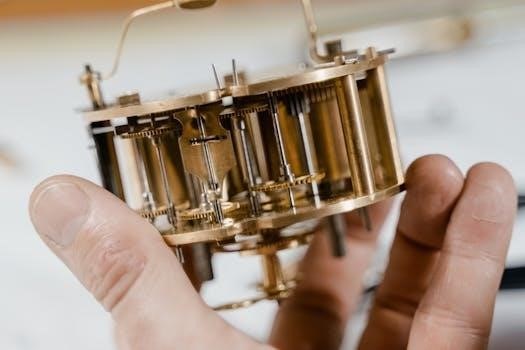What is a Manual Propelling Device?
A manual propelling device is any apparatus used to move a vessel by human power; This includes oars, paddles, or any other device operated by hand or foot to propel a boat․ These devices offer a backup for mechanical failures․
What is a Manual Propelling Device?
Definition of a Manual Propelling Device
The term “manual propelling device” encompasses any tool or equipment that enables a person to move a boat through the water using their own physical strength․ This includes familiar items like oars, paddles, and even the rudder of a small sailboat if used for propulsion․ The key characteristic is that it relies on human power, offering a means of maneuvering or returning to shore should the vessel’s primary power source fail․ Essentially, it is a backup system ensuring safety and control․
Manual propelling devices come in various forms․ The most common types include oars, which require oarlocks, and paddles․ Other examples include rudders on sailboats and paddle wheels found on specific types of boats․
Oars and Paddles
Oars and paddles are among the most frequently used manual propelling devices․ Oars necessitate oarlocks for leverage, while paddles are directly manipulated by hand․ They provide boaters with the ability to propel and maneuver their vessels independently of any mechanical systems․ Selecting the right size and type of oars or paddles depends on the size and design of the boat, ensuring efficient and effective manual propulsion when needed․ They are essential for safety and control․
Types of Manual Propelling Devices
Anchors as an Alternative
In certain situations, an anchor with an appropriate length of rope, cable, or chain can serve as an acceptable alternative to a manual propelling device․ Specifically, for boats under 8 meters, regulations may allow an anchor to replace oars or paddles․ This alternative relies on the ability to control the boat’s position and prevent drifting in case of engine failure, providing a safety measure when manual propulsion is not the primary focus․ The anchor line must be at least 15 meters long․
Small Vessel Regulations mandate that certain pleasure craft carry a manual propelling device or an anchor onboard․ This requirement generally applies to vessels up to 9 meters in length, ensuring a backup propulsion method․
Vessel Size and Requirements
The requirement to carry a manual propelling device, such as oars or a paddle, or alternatively an anchor, often depends on the vessel’s size․ Regulations typically specify that pleasure craft up to a certain length, often around 9 meters (approximately 29․5 feet), must have one of these items onboard․ This ensures that smaller vessels have a means of propulsion or securement in case of emergencies or mechanical failures․ Understanding these requirements is crucial for compliance and safety․

Regulations and Requirements
Manual Propelling Device or Anchor
Regulations often allow smaller vessels, typically those less than 8 meters in length, to carry either a manual propelling device or an anchor with an appropriate length of rope, cable, or chain․ The anchor must have a minimum of 15 meters of rope, cable, or chain․ This option provides flexibility for boaters, recognizing that an anchor can serve as a suitable alternative to a manual propelling device in certain situations, ensuring safety and compliance․
Manual propelling devices are crucial in emergencies․ If an engine fails, these devices provide a way to move the boat․ They enable boaters to reach safety or call for help, ensuring a safer boating experience․
Emergency Situations
In emergency situations, manual propelling devices are invaluable․ They provide a means of propulsion should the primary engine fail, allowing boaters to navigate to safety or a more secure location․ Having oars, paddles, or another manual device can make the difference between a minor inconvenience and a dangerous situation․ These devices enable controlled movement, allowing for course correction and avoiding hazards while awaiting assistance, ensuring safety and peace of mind on the water․ Regular checks and maintenance are crucial for functionality․
Importance of Manual Propelling Devices
Maneuvering in Case of Breakdown
Manual propelling devices are essential for maneuvering a boat in the event of a mechanical breakdown․ If the engine fails, oars or paddles can be used to steer the vessel away from hazards, such as rocks or other boats․ This allows the operator to control the boat’s direction and speed, preventing collisions and maintaining a safe position․ Furthermore, this manual capability provides time to assess the situation, call for assistance, or make necessary repairs, enhancing overall safety and preparedness on the water․
Before each trip, it’s crucial to inspect your manual propelling device․ Ensure it is in good condition and readily accessible for emergencies․ Check for any damage or wear that could compromise its effectiveness․
Pre-Trip Checks
Before setting out, always inspect your manual propelling device․ This includes oars, paddles, or any other apparatus․ Ensure they are in good working order and easily accessible in case of an emergency․ Check oarlocks for proper function and ensure paddles are not damaged․ Accessibility is key; make sure nothing is obstructing your ability to quickly reach and use the device․ Confirm that any accompanying components, like oar locks, are present and secure․ This proactive check can be crucial for safety․

Inspection and Maintenance
Condition and Accessibility
Maintaining the condition of your manual propelling device is paramount․ Regularly inspect oars and paddles for cracks, splits, or warping․ Ensure oarlocks are securely attached and function smoothly․ Accessibility is equally important․ Store the device in a location where it can be quickly reached in an emergency, free from obstructions․ Practice retrieving the device to ensure familiarity and speed․ A well-maintained and easily accessible manual propelling device is a vital safety measure on any vessel, so it is important to be ready․
A rudder on a small sailboat is moved left to right to create forward motion․ Oars and paddles are typical examples․ Anything operated by hand or foot to move a boat is a manual propelling device․
Rudder on a Small Sailboat
The rudder on a small sailboat serves a dual purpose․ While primarily used for steering, it can also be employed as a manual propelling device․ By moving the rudder from side to side, a sailor can generate forward motion, especially in calm waters or when maneuvering in tight spaces․ This method requires physical effort and may not be efficient for long distances, but it provides a viable option for propulsion when other means are unavailable․ This demonstrates the versatility of boat components․
Examples of Manual Propelling Devices
Paddle Wheel on a Paddleboat
A paddle wheel on a paddleboat exemplifies a more substantial manual propelling device․ Although often engine-powered, the paddle wheel can be operated manually․ This involves using human power to turn the wheel, pushing the boat through the water․ While more physically demanding than using oars or paddles, a manually operated paddle wheel provides a robust method of propulsion, particularly suitable for larger vessels․ This system highlights how even complex mechanisms can be adapted for manual operation, ensuring mobility in various situations, which could be critical in case of emergencies․
Manual propelling devices are crucial when engine failure occurs․ Oars or paddles can be used to move the boat safely․ This ensures the vessel can return to shore or a safe location, preventing further hazards․
Propelling in Case of Engine Failure
When an engine quits, a manual propelling device becomes essential for safety․ Paddles or oars can provide the necessary means to navigate back to shore․ This is critical for smaller vessels that may not have alternative power sources․ Having a reliable manual option ensures boaters are not stranded․ Proper maintenance and accessibility of these devices are paramount․ They allow boaters to maneuver out of dangerous situations, like approaching storms or hazardous waters․ Always ensure the device is appropriate for your boat size․
Use of Manual Propelling Devices
Manoeuvring the Boat
Manual propelling devices are useful not only in emergencies but also for precise maneuvering․ In tight spaces, like marinas or shallow waters, oars or paddles offer better control․ They allow for gentle adjustments and movements that an engine might not permit․ This is particularly helpful for docking, avoiding obstacles, or navigating narrow channels․ The ability to quietly and deliberately move the boat enhances the boating experience․ It allows for closer interaction with the environment without the noise and disturbance of a motor․
A sailing vessel is one propelled by wind, whereas a power-driven vessel uses machinery․ A sailboat using its motor is legally considered a power-driven vessel, regardless of its sails․

Manual Propelling Device vs․ Power-Driven Vessel
Sailing Vessel vs․ Power-Driven Vessel
Understanding the distinction between a sailing vessel and a power-driven vessel is crucial for navigation rules․ A sailing vessel relies on wind power, while a power-driven vessel utilizes an engine․ Interestingly, a sailboat using its engine is legally classified as a power-driven vessel, even if its sails are raised․ This distinction affects right-of-way protocols, emphasizing the importance of identifying the primary means of propulsion․ This classification ensures clarity and safety on the water, as different rules apply based on the vessel’s operational mode․

Personal Watercraft (PWC) and Manual Propelling Devices
Personal Watercraft (PWCs) are often subject to specific regulations․ However, PWCs are exempt from the requirement to carry a manual propelling device, provided all occupants wear a personal flotation device (PFD)․
Exemptions for PWCs
Regulations often stipulate specific requirements for various types of vessels․ Interestingly, Personal Watercraft (PWCs) sometimes receive exemptions regarding manual propelling devices․ The most common exemption allows PWCs to operate without a designated manual propelling device, provided that every person onboard is wearing an approved personal flotation device (PFD)․ This exemption recognizes the unique operational characteristics and typical usage scenarios of PWCs, focusing on immediate safety measures instead of traditional backup propulsion methods․ These exemptions are designed to ensure safety․

No Responses